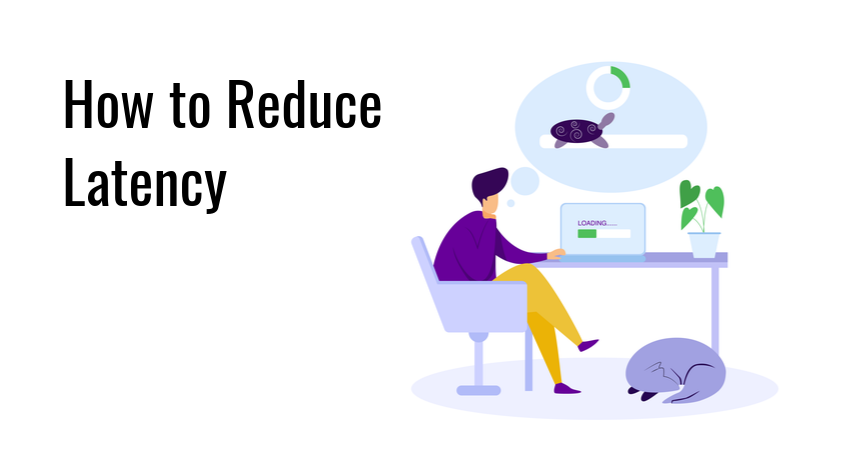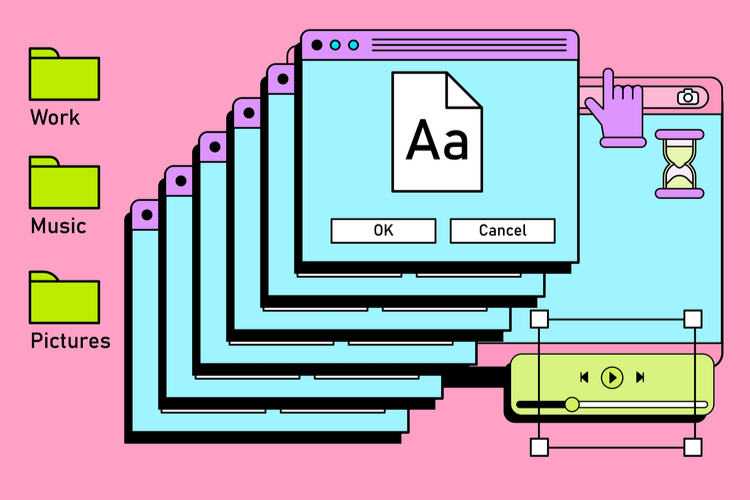Minecraft players love collecting achievements. Some do it to brag to their online friends, others…

How to Reduce Latency
High latency is one of the most common issues in online gaming and live streaming. Also known as lag, high latency is manifested as a delay in communication between different network nodes. It is the main cause of countless ruined multiplayer matches and failed streaming events.
Latency is a difficult problem to solve because it depends on factors out of your control such as the quality of your ISP’s network infrastructure, or bugs in the network code of a multiplayer game.
That being said, there are certain steps you can take to reduce latency at your end of the network. Often this is enough to significantly improve your gaming and live-streaming experience.
To that end, here are some actions you can take to lower latency.
How to Lower Latency: 10 Tips
Latency depends on three main factors, your internet connection speed, the distance between network nodes, and the volume of data being passed back and forth. There is a limit to what you can do to affect these factors, but certain actions on your part can be enough to significantly reduce latency.
1. Close Network-using Apps Running in the Background

Most apps we use today have an always-online component to them. Some only do a quick login check after starting, but others continuously exchange information with far-away servers. If you have the latter kind of apps running in the background while you game and stream, it can cause latency issues, especially if you have lower bandwidth.
The solution is to close any non-essential apps with network access running in the background while you stream or play games online.
2. Temporarily Disable Updates
Your operating system often runs updates in the background without your knowledge while you’re attempting to stream or game online. If it’s a major update, you are probably downloading gigabytes of data at a time, which will limit your available bandwidth for communicating with peers in a multiplayer game or with stream viewers.
The solution is to pause any ongoing updates or to disable automatic updates altogether.
3. Talk with Housemates About Network Usage

It is common to share an internet connection with housemates, whether they’re family, friends, roommates, or just people using the same public Wi-Fi spot. If everyone is running network-intensive processes at the same time (such as streaming video, playing games, or downloading files), it will quickly use up all available bandwidth, leading to a laggy experience for everyone.
The solution here is to try to discuss everyone’s internet usage habits and find a solution where everyone gets their fair share of bandwidth.
Glimpse was designed from the ground up with content creators in mind. Keep your best content hosted on Glimpse’s low-latency media servers and delight fans with seamless live-streaming and video playback.
4. Get Closer to the WiFi Router
If you’re using a Wi-Fi router to connect to the web, you might experience latency as a result of package loss due to a weak Wi-Fi signal. This can be due to the distance from the router, as well as obstructions such as walls or ceilings standing in the way.
The solution is to place your PC or laptop closer to the router, if possible.
5. Use an Ethernet Cable to Connect to the Router

Alternatively, avoid Wi-Fi altogether and connect to the router with an Ethernet cable for a faster connection with no package loss. This is highly recommended even if you’re not trying to stream or play multiplayer. A cable connection is better protected from man-in-the-middle cyber-attacks that intercept packets of data between the router and your PC.
6. Play Games on Lower Settings
Games are some of the most resource-intensive apps out there, and the added strain on your PC can have a negative impact on latency. If your PC is using all of its CPU and GPU cores to render 4K graphics, it will have little processing power to spare for encoding and sending network data to the server and other players. The solution is to play the game on lower settings.
7. Play on the Appropriate Server Region

Sometimes lag is caused by the physical distance between your PC and the gaming server you’re playing on. Fortunately, most active multiplayer games allow you to choose a server in your region.
8. Reduce Stream Encoding Quality
Encoding a live stream is a resource-intensive process, especially if you’re streaming in frame rates above 30fps and resolutions higher than 1080p. If your live stream doesn’t depend on visual fidelity to get its point across, reduce the encoding quality to something more manageable. This also goes for audio: avoid streaming uncompressed audio, and instead choose a compression format such as MP3 or AAC.
Note: For more information, read our article on how to fix live stream audio problems.
9. Disable Complex Effects and Overlays

Continuing on the previous point, complex stream overlays and effects place an additional load on your PC while you’re live streaming. Keep them at the minimum or disable them all together to lighten the load on your PC and internet connection.
10. Get a Faster Connection
If you’ve tried everything above with little effect, you might get better results if you simply get a better internet connection. A higher internet bandwidth ensures you can run multiple network-intensive apps at the same time without packet loss.
Why is Low Latency Important?
Low latency means there is little delay between the sending of a message packet over a network and receiving a reply. This makes it possible to interact in near real-time with different network nodes, which is essential for both online gaming and live streaming. High latency on the other hand makes real-time interaction almost impossible and provides an awful user experience during online multiplayer and streaming.
What Issues High Latency Causes in Online Gaming?
High latency or lag has been a persistent issue in online multiplayer since the early days of the internet. The effects of lag are most pronounced in real-time multiplayer games (especially e-sports titles like Counter-Strike: GO or Starcraft 2). Here even a second of delay can mean the difference between winning and losing.
What Issues High Latency Causes During Livestreaming?
In live streaming, high latency refers to the delay between an event being recorded on your PC, and the event being displayed to viewers. This makes it difficult to chat with fans during a live stream, in addition to making for a poor viewing experience for those who are watching the stream.
Conclusion
If you stream often or play a lot of online multiplayer, high latency is an issue you’ll come across many times. Fortunately, you can attempt quite a few solutions before resorting to upgrading your internet connection.

Glimpse makes it easy for you to sell access to your Minecraft, Steam, Terraria, Rust, 7 Days to Die, Starbound, and most other gaming servers. Using our esports platform, you can connect your server directly to the platform and enable access to it within a sponsorship level.
- Sell access to your server within sponsorships
- Whitelist specific users for your gaming server
- Use webhooks to connect your server in several simple clicks
- Glimpse’s monetization system charges 0% commission so you get 100% of your earnings



